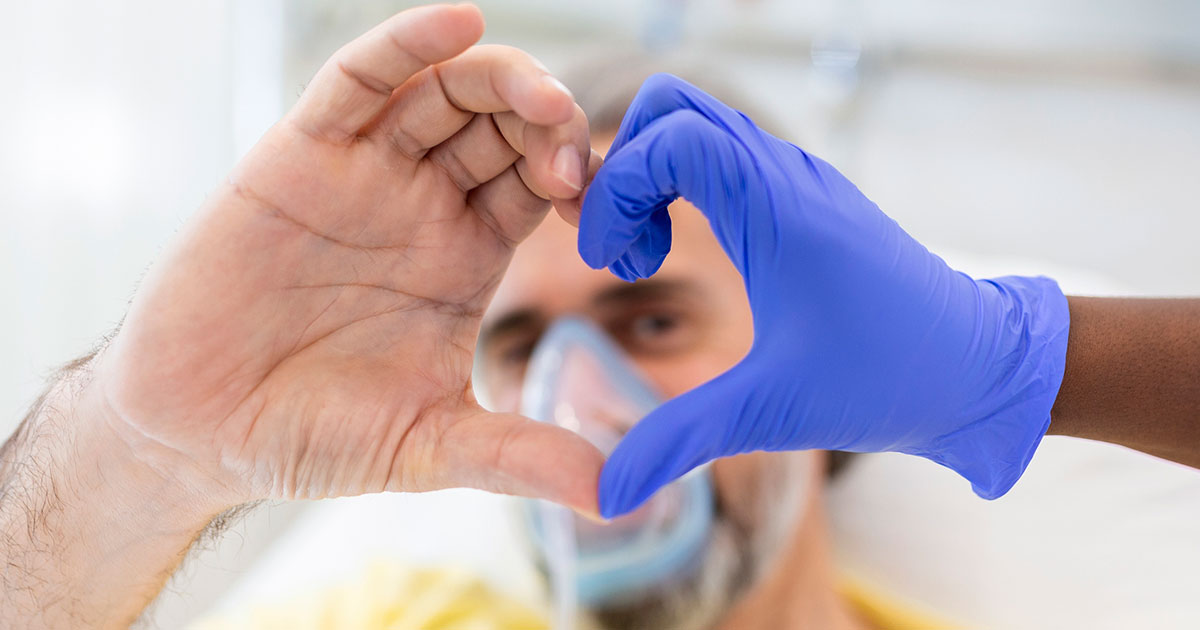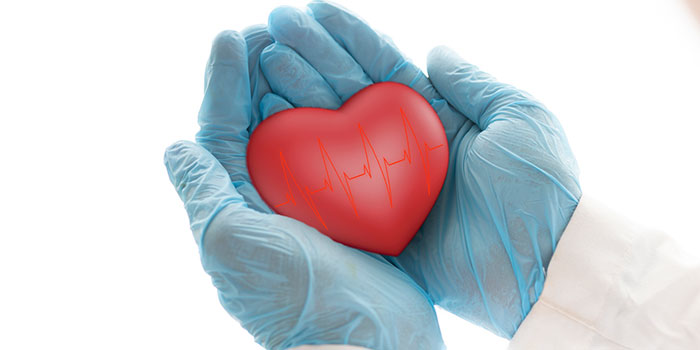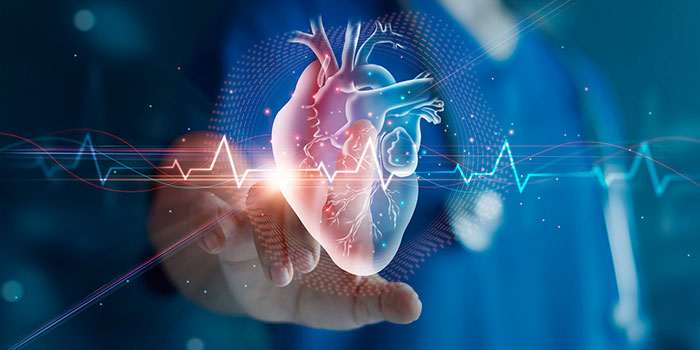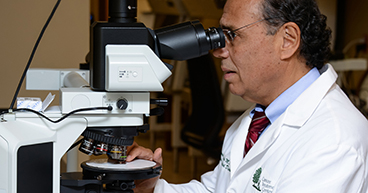
The heart is so vulnerable—figuratively and literally. It aches for those we love. It breaks when overcome by sadness. It flutters during bursts of joy. It races with anticipation.
While the emotions of the heart are a common topic of prose and poetry, heart disease is rarely the subject of songs or sonnets. According to the U.S. Centers for Disease Control and Prevention (CDC), heart disease is the leading cause of death in the United States. Nearly 700,000 Americans died of cardiovascular disease in 2020—one every 34 seconds. That’s not something you’ll hear in a love song.
Heart disease, or cardiovascular disease (CVD), most commonly refers to coronary artery disease, heart attacks, irregular heartbeat (arrythmia) or heart defects, but it rarely includes cancer. While virtually every organ in the body is susceptible to cancer, the disease rarely affects the heart directly. Nearly 2 million Americans will be diagnosed with cancer this year, but fewer than two in every 100,000 will be diagnosed with heart cancer, making the incidence very low.
In this article, we’ll explore these topics:
- What is heart cancer?
- What is a cardiac sarcoma?
- Heart cancer symptoms
- Is there a CVD-cancer connection?
If you’ve been diagnosed with cancer and are interested in a second opinion on your diagnosis and treatment plan, call us or chat online with a member of our team.
What is heart cancer?
As with most cancers that form in the tissue of a particular organ or body part, heart cancer develops when cells in the heart mutate or become defective and grow unchecked. Eventually, enough of these cancer cells develop into a tumor.
But unlike cells in other organs or parts of the body, cells in the heart don’t grow or divide much in adults. So, heart cells are less likely to develop the type of replication errors that often lead to cancers in other parts of the body.
While cell behavior in the heart may result in fewer cancers, it also makes it more difficult for damaged heart cells to heal themselves or be replaced by new, healthy cells. That’s why, in many cases, heart damage is often permanent.
Also, the heart is insulated behind muscle, bone and cartilage and protected from cancer-causing elements.
“Organs like the lungs and skin are exposed to carcinogens such as tobacco smoke and ultraviolet light, contributing to lung cancer and skin cancer,” cardiologist and researcher Rohin Francis, MD, told cancerresearchUK.org. “However, the heart’s placement within the body means that it isn’t as exposed to the outside environment.”
When a tumor is found in the heart, it’s often a benign, or non-cancerous, tumor. Most malignant tumors in the heart are likely to be a secondary heart cancer, a metastatic cancer from another source. According to research published in the National Library of Medicine, “metastatic tumors to the heart are 30 to 50 times more common than primary heart tumors.”
When metastatic tumors are found in the heart, these types of metastases are still identified based on the original source. For instance, if breast cancer spreads to the heart, it’s considered metastatic breast cancer, not heart cancer.
What is a cardiac sarcoma?
While primary cardiac tumors are extremely rare, the most common type of heart cancer—cardiac sarcoma—tends to be very aggressive and is often lethal.
Most cancers are carcinomas that grow in epithelial cells in the linings of most organs, including the lungs, liver, kidneys and colon. Most breast cancers are carcinomas. Sarcomas are generally rare cancers that grow in soft or connective tissue, such as fat, muscle, nerves or blood vessels.
Soft tissue sarcomas account for about .7 percent of all cancer diagnoses, or about 13,000 new cases a year. Cardiac sarcomas make up a small fraction of all sarcomas.
In fact, in research on a pool of sarcoma patients, gathered by scientists at the University of Wisconsin from 1988 to 2005, only 210 cases of cardiac sarcomas were identified, compared to more than 24,000 non-cardiac cases. The small number of cases for this type of cancer makes it difficult, if not almost impossible, to conduct meaningful research on primary tumors of the heart.
Cardiac sarcomas often develop with few symptoms until they become more advanced. Treatments options include surgery, radiation therapy and/or chemotherapy.
Other more common types of sarcomas include:
- Angiosarcoma, which forms in blood and lymph vessels
- Dermatofibrosarcoma, found in the tissue under the skin, most commonly in the trunk or limbs
- Epithelioid sarcoma, typically found in the hands or feet of young adults and appearing as small nodules
- Ewing’s sarcoma, a type of bone sarcoma that may also be found in the soft tissues outside the bone
- Fibrosarcoma, which forms in cells in the fibrous tissue around muscles, tendons and ligaments
- Gastrointestinal stromal tumors (GISTs), most often found in the stomach
- Kaposi sarcoma, cancer of the blood vessels or lymph system known for producing reddish or purple plaques on the skin
Heart cancer symptoms
Symptoms of heart cancer may be similar to those of other serious heart diseases such as a stroke or heart attack, including:
- Fluid build-up in the lungs caused by congestive heart failure
- Chest pains
- Restricted blood flow
- Bloody cough
- Shortness of breath
- Fatigue or weakness
- Blood clots
- Arrhythmia or irregular heart rhythm
- Dizziness or fainting
- Cognitive issues, such as confusion or memory loss
- Unexplained Weight loss
Is there a CVD-cancer connection?
Cancer is listed just under heart disease as the leading cause of death in the United States. And while heart cancer is very rare, the two diseases do share some common links.
Common risk factors
Heart disease and cancer share several risk factors, especially:
- Obesity
- Poor diet
- Inactivity
- Tobacco use
- Alcohol abuse
- Diabetes
“Although commonly thought of as two separate disease entities, cardiovascular disease and cancer possess various similarities and possible interactions,” researchers from the University of Minnesota concluded, “including a number of similar risk factors, suggesting a shared biology for which there is emerging evidence.”
The impact of treatments
Cancer treatments are often hard on the body, especially the heart. Radiation therapy, chemotherapy and immunotherapy have the potential to cause some level of heart damage. In many cases, issues may not surface until years later.
According to research, about 10 percent of cancer patients are likely to die of cardiovascular disease. Patients diagnosed before the age of 55 are 10 times more likely to die of heart disease than those who have not had cancer.
It’s important for patients to talk to their care team about steps they can take to reduce treatment-related risks for heart damage.
If you’ve been diagnosed with cancer and are interested in a second opinion on your diagnosis and treatment plan, call us or chat online with a member of our team.




